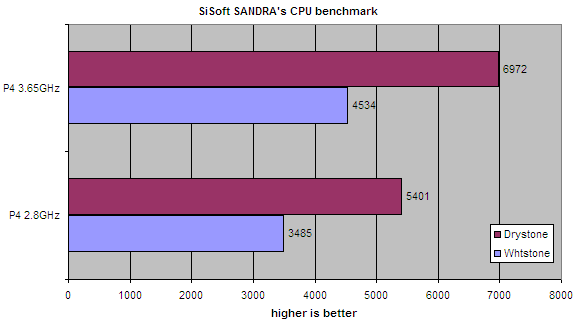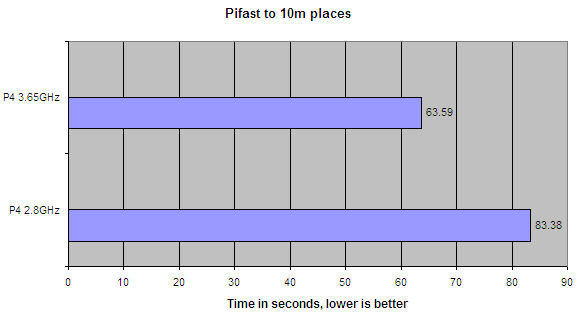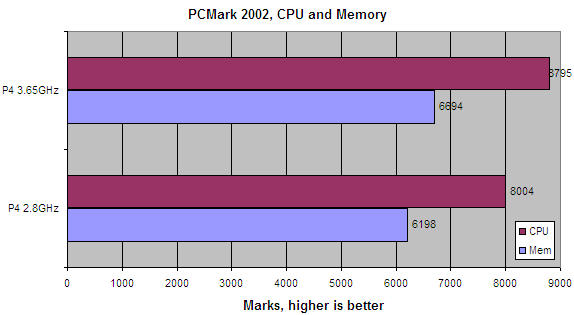Benchmarks I
How does SiSoft SANDRA's CPU bench see this new processor ?.

The Pentium 4 2.8GHz processor is extremely quick in its own right. Adding another 850MHz through R134a-based cooling turns it from impressive to awesome.

The only method we can use to get our 2.8GHz processor up to 3.65GHz is to raise the front-side-bus to 174MHz. The elevated speed is shown with by greater memory bandwidth.
It's substantially faster and we've had to raise the memory clocks to accommodate the increased speed. How does this affect real-world performance ?. Let's run Pifast and find out Pifast simply calculates the constant Pi to a set number of decimal places. A fast FPU and oodles of bandwidth are the prime determinants of performance here. I've chosen 10 million decimal places as a benchmark. You can download it here, simply unzip and run the .bat file, and wait for the results to be appended to the text file.

Wholescale decimation here as we see the fastest time ever recorded here at Hexus. Have a look here for verification of this super-fast time. Remember that we're running memory at 1:1 with the CPU's FSB. Running asynchronously would have given us a sub-60 second time.
Next we'll turn our attention to MP3 encoding. We're benchmarking by encoding a 638MB custom WAV file (Moby's Play album, incidentally) into 192kb/s MP3 using the LAME 3.92 encoder and Razor-Lame 1.15 front-end.

Can you say fast ?. Less than 3 minutes to compress 638MB's worth of WAVs into 192 kb/s MP3s. Needless to say that this is the fastest time we've ever seen.
On to PCMark 2002, It consists of a series of tests that represent common tasks in home and office programs. The benchmark is split into three constituent parts which focus on the CPU, memory and hard drive(s) respectively. PCMark 2002 seeks to do for home and office applications benchmarking what 3DMark does for video card benchmarking. You're given a final score for each part mentioned above. I've left out the hard drive mark as it doesn't differ greatly when the CPU's speed is changed.

As we would expect, both the memory and CPU scores rise.









